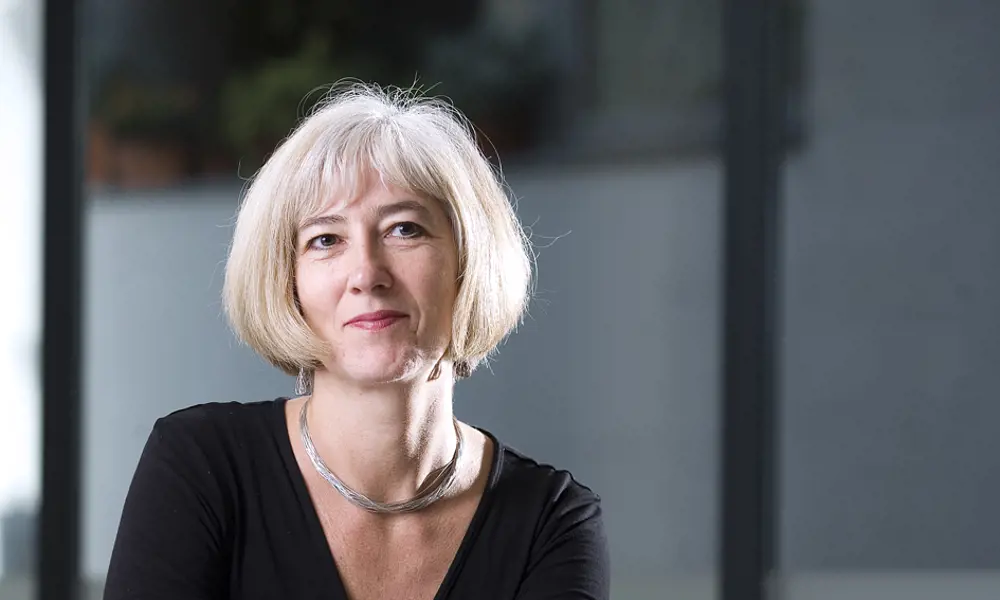
Creating user-friendly buildings
It all started when her father bought a field for development in the village where the family lived. Every weekend, Michelle McDowell, then just 10 years old, went along to observe and occasionally help the people building the house. Since this first experience on a building site, McDowell has worked on some of the most famous buildings in the country, including redeveloping the Royal Albert Hall. She has helped construct and renovate hospitals, offices, research labs and university premises, not to mention rebuilding her own Georgian house in the Cotswolds.
It was not just through house building that her father influenced McDowell’s career choice. He taught science at a local secondary school, and one day brought home a brochure from the Construction Industry Training Board (CITB). She says, “The CITB ran courses for girls who were doing maths and physics and wanted a bit of career guidance”. Back then, at her all-girls grammar school, the careers advice amounted to, as she puts it: “if you did well you went into medicine. If you were less academic, perhaps nursing or secretarial work.” None of these prospects appealed to this youngster who had a keen interest in maths and physics.
McDowell has worked on some of the most famous buildings in the country, including redeveloping the Royal Albert Hall
McDowell’s parents bought into their teenage daughter’s enthusiasm and allowed her to head off on her own for a CITB week in Sheffield. “It was fantastic. We visited a construction site, a fabrication shop and a design office. It all just came together for me, because I knew that I didn’t really want to apply my interest in maths and physics to further research. I wanted to do something more practical.”
Getting hooked
When McDowell took her degree course at Bristol University, she found it was the usual mix of civil engineering disciplines. “You do all of the different subjects, geotechnical, hydraulics – and building design was one of those.” However, she did get hooked on building design. “I love the maths and physics associated with it. I was quite clear in my own mind by the end of the course that this was really what I wanted to do. Unlike some civil engineering, which is literally hidden underground, with building design there is an easily visible manifestation of your work.”
In the 1990s, it wasn’t easy to break into a profession where women were a significant minority. At university, she says, “I think we started off with probably five women on our degree course out of 30, and ended up with three of us graduating, a small handful.”
The issue of gender is always a sensitive issue in conversations with women in senior engineering roles. Is it really something that you have to talk about? Don’t they find the topic dull and frustrating? After all, it isn’t something that comes up when talking to men. In McDowell’s case, there is no need to approach the topic delicately. She brings up the topic several times in conversation and is eager to do something about the shortage of women in engineering. If nothing else, she feels that attracting more women into the profession would help to alleviate the shortage of engineers of any gender.
I do as much as I can, because I really think that it is important to try and show women particularly that you can make a successful career in engineering, and what a wonderful creative life you can have
Michelle McDowell
“I do as much as I can, because I really think that it is important to try and show women particularly that you can make a successful career in engineering, and what a wonderful creative life you can have.” Although being one of the few in a senior position does mean that: “You do get an unfair share of, ‘Come to talk here, there and everywhere’”.
Fortunately, it isn’t always necessary to travel for such engagements. Just after she talked to Ingenia, McDowell was one of the hosts and speakers at a ‘Women in Leadership’ breakfast event. This time the venue was in her own offices at the London studio of BDP (formerly the Building Design Partnership), which describes itself as “a major international practice of architects, designers, engineers and urbanists”. McDowell is Chair of Civil and Structural Engineering at BDP, and one of the 26 directors who run the business and 800 staff. She joined the company, which operates as a private limited company, in 1997. She quickly rose to board level in 2003, and in 2004, became head of the company’s Civil and Structural Engineering group. McDowell’s career in civil engineering had started in the traditional way, as a graduate structural engineer with WS Atkins in 1984. In 1988 and 1989, she worked as a site engineer with John Laing Construction on the new headquarters for Confederation Life in Stevenage. “I saw the building rise from piles to construction of the concrete frame and steel glazed atria,” she says.
Initial projects
In 1989, McDowell joined Whitby, Bird and Partners, first as a project engineer, then senior engineer before becoming an associate in charge of a team of engineers. It was in this job that she spent time in Germany, giving her an opportunity to indulge her interest in languages – she had studied French as part of her civil engineering degree. “My projects in Berlin and Cologne gave me the opportunity to learn technical German.”
The work in Germany came about through working with the architect Nicholas Grimshaw (now Sir Nicholas). She says: “We won some projects to work with him and it was such a wonderful experience. In part, this is because he is an ‘engineers’ architect’. Working with somebody like Nicholas Grimshaw, who really loves to express structure in his buildings, it is just manna to us really.”
One of the projects they worked on together was the stock exchange building in Charlottenburg in Berlin. Grimshaw’s vision was “for an armadillo type of building, with ribs expressed as part of the structure. He came up with this wonderful idea for basically a rib cage which is the shape of the building. We created arches, structural arches and suspended all of the floors from the arches. It became such a very dramatic building!”
Some architects delight in designing buildings that don’t show any visible sign of the structure that holds it all up, then expect structural engineers to find ways to put up these buildings and make them work. McDowell says: “Such an approach is quite upsetting really, because structure is beautiful. Why would you want to hide it?”
The way you would recognise a building of mine is that it is designed around the people who use it
Working with architects fits in with McDowell’s passion for what she calls integrated design, an approach “where the structural engineer, architect and environmental engineer think together from the outset of a project, before ideas begin to form.” An important part of integrated design is that it also involves talking to the people who will inhabit a building. “The buildings that work best are the buildings that suit the people who use them,” she says. “I am not a subscriber to the ethos where if you go to particular architect you get their building and it is imposed on the client. The way you would recognise a building of mine is that it is designed around the people who use it. I prefer buildings that are designed around pupils who use a school, or the patients who use a hospital, or the shoppers who go to a shopping mall.”
This ‘people-centred’ approach isn’t simply listening to clients who say, “Right, we have got 50 people, who have so many meetings during the day, with 10 people in each”. It involves intensive briefing, says McDowell. “You test it and push it. You look at more flexible spaces, so that you don’t need three meeting rooms in the building. Maybe you can get away with one or two rooms and have other spaces where the meeting is just a couple of people who can sit around an informal table.” BDP practiced this in its own building in an up-and-coming area of Clerkenwell, London. The ‘recycled’ late-19th century brewery building has informal spaces for people to sit down and discuss ideas. This concept also underpinned BDP’s work on the Pears Building, a new institute of immunology and transplantation at the Royal Free Hospital, where the idea is to create a layout where scientists from different disciplines come together. Another favourite of hers is the Brighton Children’s Hospital. “It is designed around the child. You have low-level windows that the child can look out of and sea views for all the rooms. We had a children’s board. They came to meetings, critiqued the design and developed elements of the design. So, for example, the curtains that you pull around the beds, they designed the pattern on those. It is a very moving experience to be designing something with children who will actually be using the facilities.”
This people-centred approach to building design “works really really well. We call it space engineering,” says McDowell. “You can get more from these meetings if it is a creative design session. The client ends up with a much more efficient space.”
Is this approach, perhaps, a sign of the influence of women in engineering? “I try not to generalise,” says McDowell, “but I do feel that women tend to be more empathetic, they are more team-based. I find it myself, even in board meetings, talking about what we have achieved as a team rather than what I have achieved as a person.”
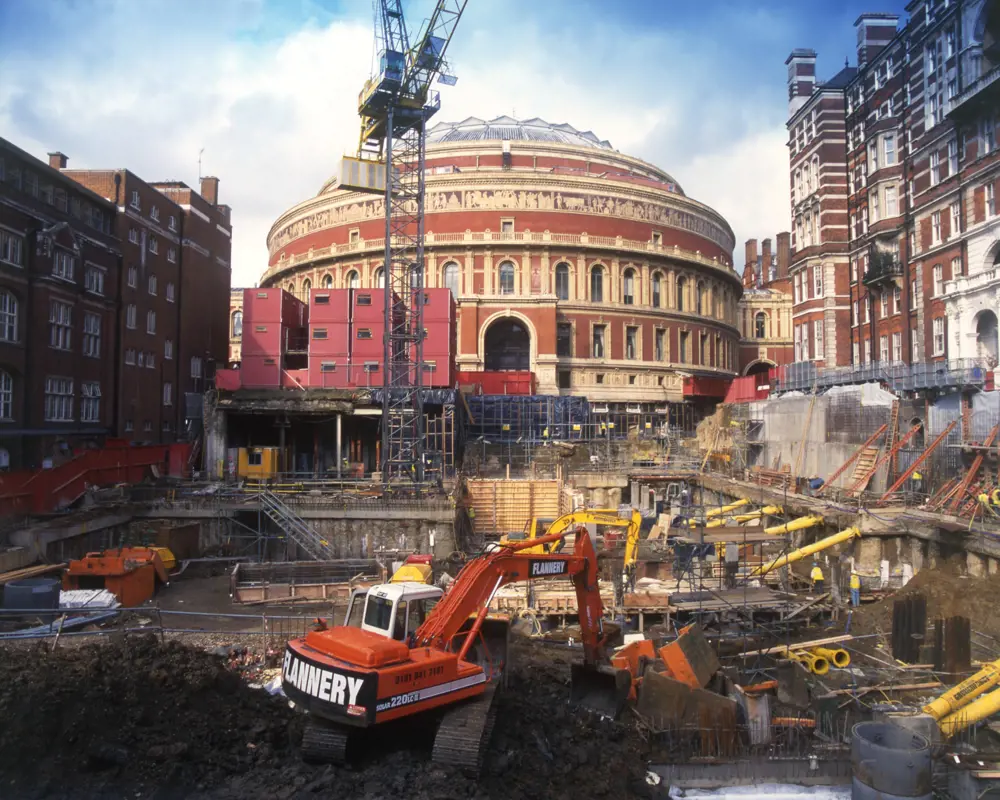
The £77million redevelopment of the Royal Albert Hall incorporated the construction of a four-storey basement adjacent to the Hall and over 30 refurbishment projects inside the Hall. The Hall remained open during the construction works. Architect BDP
Developing bim
McDowell is an enthusiastic proponent of building information modelling (BIM). BDP is among the leaders in the use of this approach to bringing IT and 3D computer modelling to building design and construction. As McDowell explains it, BIM “is basically creating a 3D model of, say, a building structure, that has intelligence embedded in it. So that you can interrogate, for example, the structural frame and find out if the columns are a particular size, are made of a certain material, then they have certain properties. We do that as structural engineers. The architect does that for the architecture, and it can all come together and you can have the complete building.” McDowell has spearheaded work with programmers to connect 3D modelling software and structural analysis software.
BIM delivers many benefits. It speeds up the design process and generally makes the industry more efficient. She insists, however, that BIM doesn’t have to reduce the role of the designer. It all starts on tracing paper. “We sketch, basically. That then sets the tone for the design and then you use BIM. The creativity of the engineer really is not replaceable by BIM. But it does kick in when you want to refine your tracing paper drawings. If an architect wanted to move a column in a 10-storey building, say, in the old days they’d have to scratch out the columns on each storey’s drawings and move the pillar. With BIM, you move it once in the model, and you generate your drawings again and it is in the new place”.
Strategically used, BIM can identify design issues that could then be rectified before they threaten to delay a project. The output from all those connected computer models can also feed into the planning and management of construction. For example, steel suppliers can tap into the data when they come to plan the production and delivery of the all-important structural components. Her use of BIM has also won McDowell and BDP plaudits, for example, when the Bridge Academy in Hackney won an award for the best use of BIM, one of the first times that BDP had deployed the approach.
McDowell had little chance to deploy BIM on one of her favourite projects. “I have a very warm spot for the Royal Albert Hall,” she laughs. “It was a very challenging project.” She was, after all, in charge of a £70 million programme to redevelop the site of the nation’s ‘village hall’. “Everyone can see what you’re doing with such a prominent icon, and when you’re digging a four-storey hole right up to the face of it then people get quite touchy.”
The plan was to build a new basement and to carry out over 30 refurbishment projects inside the building without having to close the place to paying customers. “Technically, we had to have everything absolutely sewn up so that we could do this with real confidence.” Clearly, you don’t want the building to slide into the hole, so there were monitoring points on the site. “At the project’s peak, I was receiving twice-a-day level monitoring so that I knew exactly how the building was moving.”
At the project’s peak, I was receiving twice-a-day level monitoring so that I knew exactly how the building was moving
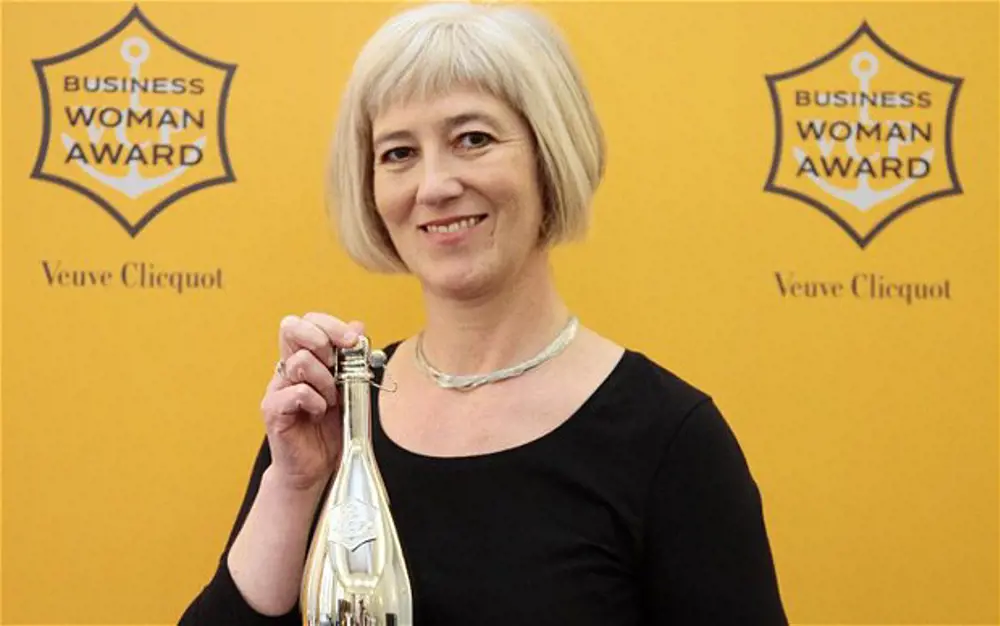
Michelle McDowell received the 2011 Woman of the Year Award in 2011. Elsa Corbineau, Brand Director of sponsor, Veuve Clicquot, said: “Michelle has proven that commercial success can be achieved alongside acting as an ethical business and it is wonderful to see a stand out business woman actively championing the next generation of female entrepreneurs.”
This evidence proved invaluable on Christmas Eve, when McDowell received a phone call from the hall reporting that a painting had fallen off the wall of the chief executive’s office. “His office basically looked over this four-storey excavation.” Was this a sign of an impending collapse? “Before I went down,” she explained, “I checked all that and there hadn’t been any movement.” It turned out that the nail holding up the painting hadn’t been put in right. “That makes your heart stop,” she laughs, “because as a structural engineer you carry such a huge responsibility. It was scary, but the whole excavation went pretty much to plan.” Indeed, the project went on to win a European Union prize for cultural heritage.
McDowell has a soft spot for Victorian and Georgian buildings in general. Older buildings may have challenges when it comes to making them energy-efficient and, another of McDowell’s concerns, enabling low-carbon construction. But, as she points out, “actually reusing a building itself is very sustainable, so that is a good starting point.” Old buildings are an increasingly important part of her work: BDP has a group that specialises in renovating historic buildings. It turns out that you can even apply BIM to existing buildings, as the company found when it worked on the Garrick Club, a Grade 2* listed building in London’s Mayfair. This project, she explains, proved to be “very challenging because the members were in residence while we were doing it”. McDowell has even taken on her own restoration project. About five years ago, with her partner, she bought a Grade II listed Georgian house in the Cotswolds. She then spent two-and-a-half years doing it up. That work coincided with another career peak that McDowell describes as a milestone. In 2011, as the project was getting under way, she was named UK Business Woman of the Year. The accolade presaged an interesting year for McDowell. The award, the first for an engineer in quite some years, may have been sponsored by champagne house Veuve Cliquot, but McDowell had a secret that she had not divulged to the organisers: she was pregnant. That meant laying off the champagne while trying to keep up with all the publicity and public attention.
These awards continue to be an important factor for McDowell. “It has been wonderful for me because it has created a network of very successful women, not as engineers but in other professions. Being a female on your own in business can be quite a lonely place and you get to share the things that you would like to share. It is just a forum for talking through some of the challenges that you have, maybe sharing your experiences and realising that you are not the only person facing these things.”
Culture is very hard to change. But that does not mean that we shouldn’t keep trying to change it
Career timeline and distinctions
Born, 1963. BSc Civil Engineering, Bristol University, 1984. Graduate Structural Engineer, WS Atkins and Partners, 1984-1987. Site Engineer, John Laing, 1988. Progressed from Project Engineer to Senior Engineer and then Associate, Whitby and Bird Partners, 1989-1997. Chartered Member, Institution of Civil Engineers, 1990. Progressed from Associate Director to Chair of the Civil and Structural Engineering Group at BDP, 1997 to date. Fellow, Institution of Civil Engineers, 1999. Fellow, Royal Society of Arts, 2001. Vice President, Institution of Civil Engineers, 2000-2002. Elected to BDP’s Executive Board, 2005. Elected Fellow of the Royal Academy of Engineering, 2010. Chair of BDP’s London and Winchester offices, 2010. BDP Acting Chief Executive, 2010. Innovation and Growth Team, HM Government: Low Carbon Construction Report, 2010. Awarded an MBE for services to the construction industry, 2010. UK Business Woman of the Year, 2011. Lifetime Achievement Award, Women in Construction, 2014.
Once again, conversation returns to the role of women in business. McDowell continues to make the case for women in engineering, with such activities as the breakfast event where, with other women in BDP, she will pass on her experiences to the next generation. It is important to carry on making the case, she says. There are still challenges, not least attitudes in the profession. “There is the overall cultural issue,” she adds. “It is a male environment. I see myself as quite determined and an obstinate person maybe. So I have got the grit to be able to deal with it. But you really shouldn’t have to have grit to succeed in that sense, to deal with that sort of negative culture. Why should you? Culture is very hard to change. But that does not mean that we shouldn’t keep trying to change it.”
***
This article has been adapted from "Creating user-friendly buildings", which originally appeared in the print edition of Ingenia 62 (March 2015).
Contributors
Michael Kenward
Author
Keep up-to-date with Ingenia for free
SubscribeRelated content
Civil & structural

Building the Shard
The Shard is one of London's most iconic buildings. The tallest in Western Europe, it was designed by Italian architect Renzo Piano and dominates the city’s skyline. Ingenia spoke to John Parker, project director for structural engineers WSP, who outlined the engineering decisions made in building the enormous steel and glass structure.
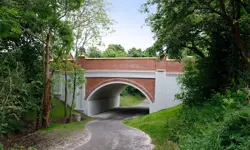
FlexiArch
Arch bridges are strong, durable and require little maintenance. However, very few had been built since the early 1900s until the FlexiArch was developed and launched in 2007. Now, there has been a minor renaissance for this ancient form of construction.
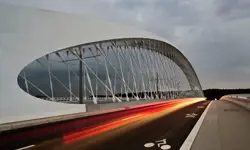
Troja Bridge
In November 2014, one of the world’s largest network arch bridges was officially opened in Prague. The UK may soon have its first network arch bridge if the go-ahead is given for a new rail project in Manchester.
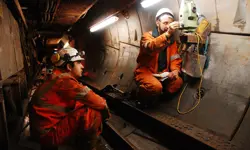
Tunnel boring navigation
With no surface reference points, underground surveying requires specialised skills in order to gain trustworthy accuracy for the surveying team. Find out what techniques are used to measure distance, maintain position and cope with curved alignments in tunnels.
Other content from Ingenia
Quick read

- Environment & sustainability
- Opinion
A young engineer’s perspective on the good, the bad and the ugly of COP27

- Environment & sustainability
- Issue 95
How do we pay for net zero technologies?
Quick read

- Transport
- Mechanical
- How I got here
Electrifying trains and STEMAZING outreach

- Civil & structural
- Environment & sustainability
- Issue 95